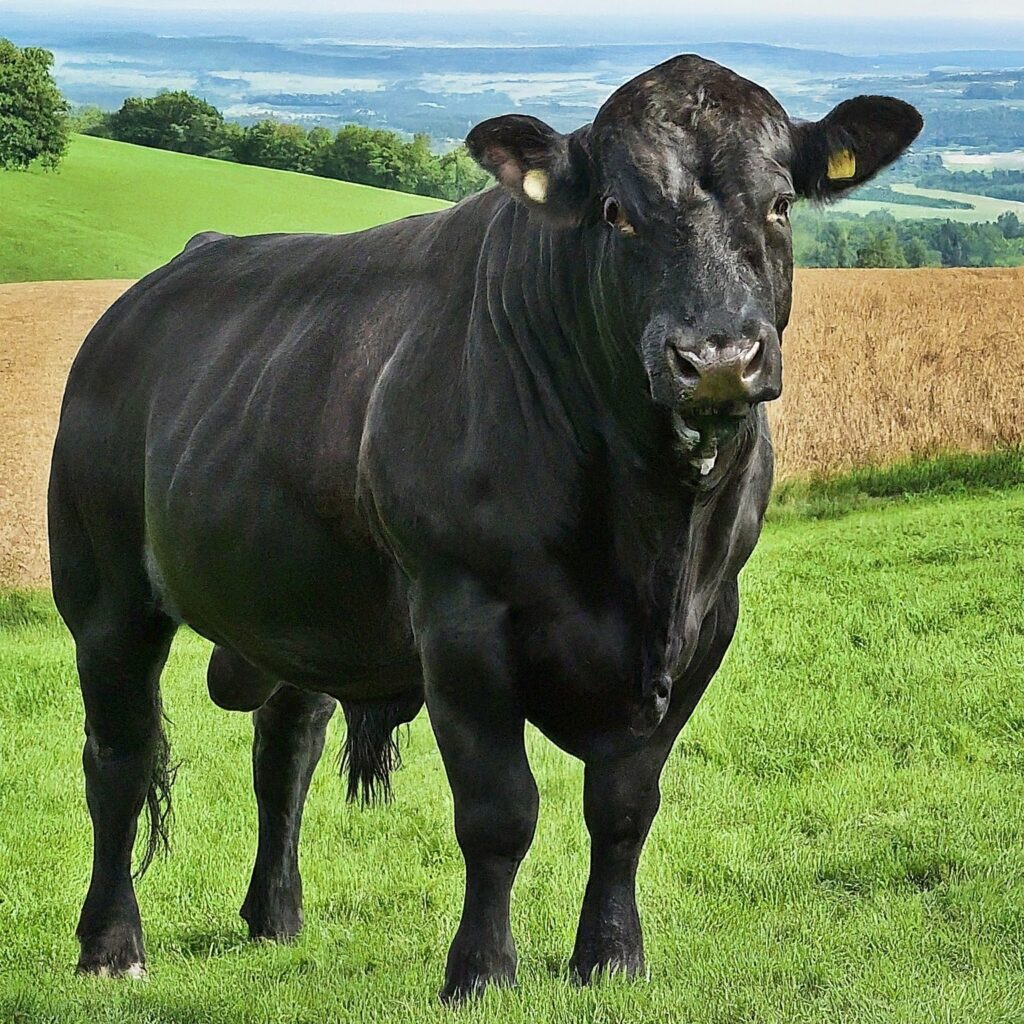
Drakensberger Cattle! Imagine a sleek, black cow grazing peacefully against the backdrop of South Africa’s majestic Drakensberg mountains. This could easily be a Drakensberger – a cattle breed as resilient and beautiful as the landscape it hails from. These cattle embody the spirit of South Africa, with a history interwoven with the country’s people and a reputation for adaptability and delicious beef. Let’s explore their origins, characteristics, and what makes them such a compelling choice for cattle producers.
Origin
The Drakensberger story begins centuries ago with the indigenous Khoi and San people of Southern Africa. Their cattle provided both milk and meat and were incredibly hardy. Descendants of these cattle, along with some European breed influence, continued to be prized by South African settlers for their versatility and ability to thrive in tough conditions. In the early 1900s, the Drakensberger breed was officially developed and recognized, and it has played a vital role in South African cattle production ever since.
Characteristics
Drakensbergers are medium-sized cattle with a strong, well-proportioned build. They’re known for their sleek, entirely black coats, making them visually striking in a pasture. This dark coat offers some protection against the harsh African sun. They’re naturally adapted to South Africa’s terrain and climate, showing excellent disease and parasite resistance. These cattle are incredibly good grazers and known for their calm, easy-to-manage temperament.
Pros
Let’s dive into why Drakensbergers might be a great fit for your operation:
- Built Tough: Drakensbergers handle South Africa’s varied climates, from heat to cold, and resist many common cattle ailments. This makes them low-maintenance heroes!
- Flavorful, Lean Beef: Their beef is renowned for its tenderness, exceptional flavor, and lean profile. These qualities are increasingly sought-after in the beef market.
- Masters of Efficiency: They thrive on natural grasslands, making them ideal for operations focused on sustainable, grass-fed production.
- Gentle Giants: Their docile temperament makes them a pleasure to work with, even for those newer to cattle raising.
Cons
For a balanced view, let’s consider some potential drawbacks:
- Regional Availability: While their popularity is growing, Drakensbergers might be harder to find outside of Southern Africa.
- Moderate Size: They won’t compete with the largest specialized beef breeds in terms of carcass weight, but often make up for it in flavor and efficiency.
Characteristics Table
Let’s summarize their key traits for easy reference:
| Characteristic | Description |
|---|---|
| Size (Mature Cows) | Approx. 1000-1200 lbs |
| Size (Mature Bulls) | Approx. 1500-1800 lbs |
| Color | Always Black |
| Horn Shape | Variable (can be polled or have a variety of horn shapes) |
| Temperament | Generally docile and easy to handle |
| Primary Usages | Beef Production |
FAQ
Let’s tackle some common questions about Drakensbergers:
- What type of breed is Drakensberger? Drakensbergers are a beef breed developed in South Africa, known for hardiness and adaptability.
- What is the quality of Drakensberger meat? Their beef is famous for its leanness, tenderness, and excellent flavor.
- What color is Drakensberger? Drakensbergers always have a smooth, black coat.
- What are the economically important traits of Drakensberger cattle? They are prized for hardiness, beef quality, adaptability to varied environments, feed efficiency, and calving ease.
Conclusion
If you’re looking for a hardy, adaptable breed that produces excellent quality beef, the Drakensberger cattle is worth a serious look. Their ability to thrive on natural forage, coupled with their calm temperament, makes them ideal for sustainable beef production. While their availability outside South Africa might be limited, they’re a hidden gem with the potential to make a positive impact on cattle operations worldwide.
Have you encountered Drakensberger cattle? Share your experiences, or any further questions, in the comments below!
